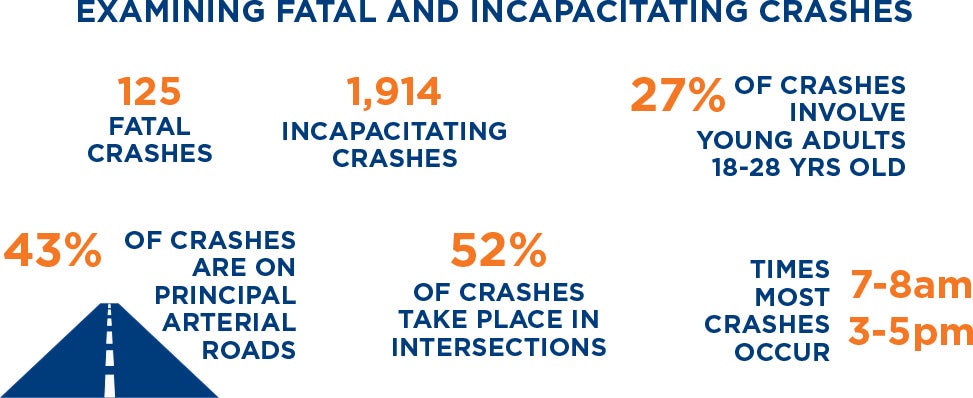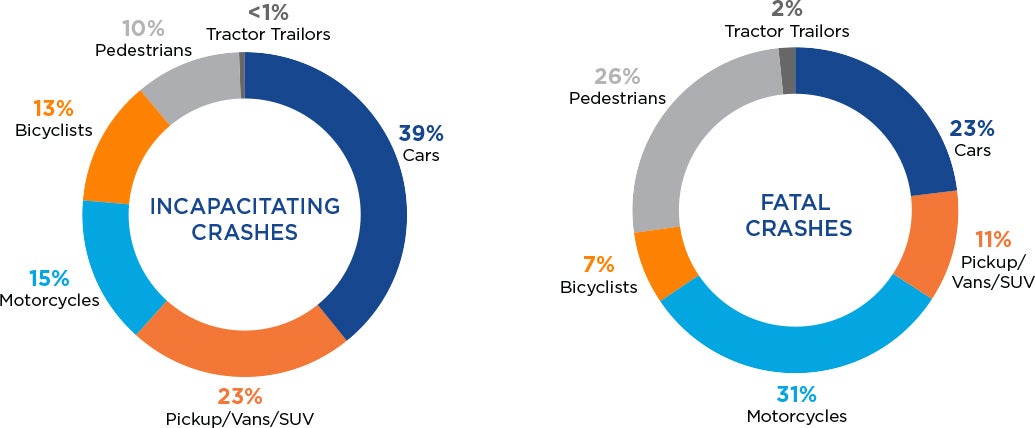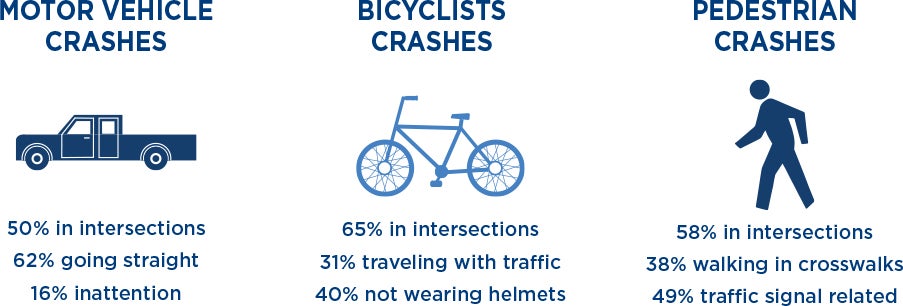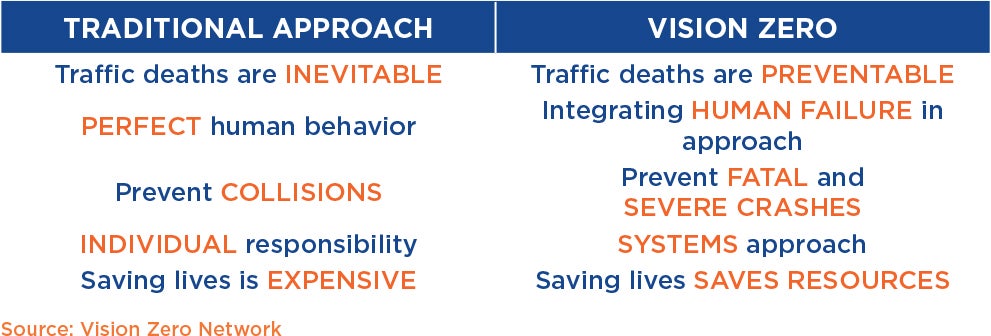This dashboard contains facts and figures about roadway crashes in Idaho during the years 2005-2020. By navigating the tabs in the dashboard you can examine different factors associated with crashes including type of vehicle, severity of crash, and contributing circumstances. Below the dashboard is an infographic summarizing the findings.
Infographic
Content on this site is monitored for compliance with WCAG 2.0 standards. We are continuously improving the usability of our content and are actively working to provide a more inclusive experience for all. Please, contact the Idaho Policy Institute immediately if you encounter any access barriers, challenges, or require the content in another format to fully access the information.
Click here to download a pdf infographic of the information below
Transportation System Safety is a Public Health Issue
Vision Zero is a strategy to eliminate all traffic fatalities and severe injuries, while increasing safe, healthy, equitable mobility for all. Its proactive, preventative approach prioritizes traffic safety as a public health issue in order to prevent traffic injuries and fatalities. However, crashes are often perceived as isolated incidents caused by human errors, rather than being viewed collectively. Examining the dynamics related to crash fatalities and severe injuries through a systems approach can enable identification of overarching safety issues and lead City of Boise to address systemic faults that result in negative outcomes.

2005-2020 By the Numbers

Contributing Circumstances

Moving Toward Safety
When compared to the traditional approach to road safety, Vision Zero takes a proactive, Safe Systems approach to addresses systemic faults in a community’s transportation system.

Conclusion
Intersections are the main issue area for all fatal and severe crashes. Pedestrians are most vulnerable when crossing in a crosswalk at a traffic signal while bicyclists traveling with traffic and crossing at intersections are most vulnerable. Motorists experiencing fatal or severe crashes are generally traveling straight with inattention, alcohol impairment, and failure to yield being the greatest contributing crash factors. By examining these and other underlying issues associated with fatal and severe injury crashes, City of Boise can identify and address systemic transportation system faults and work to reduce and eliminate future crashes.
Idaho Policy Institute
Aisha Kayed, Research Assistant
Lantz McGinnis-Brown, Research Associate
Vanessa Crossgrove Fry, PhD, Interim Director
2005-2020 data was utilized for this report. All underlying data and citations are available at
boisestate.edu/sps-ipi/